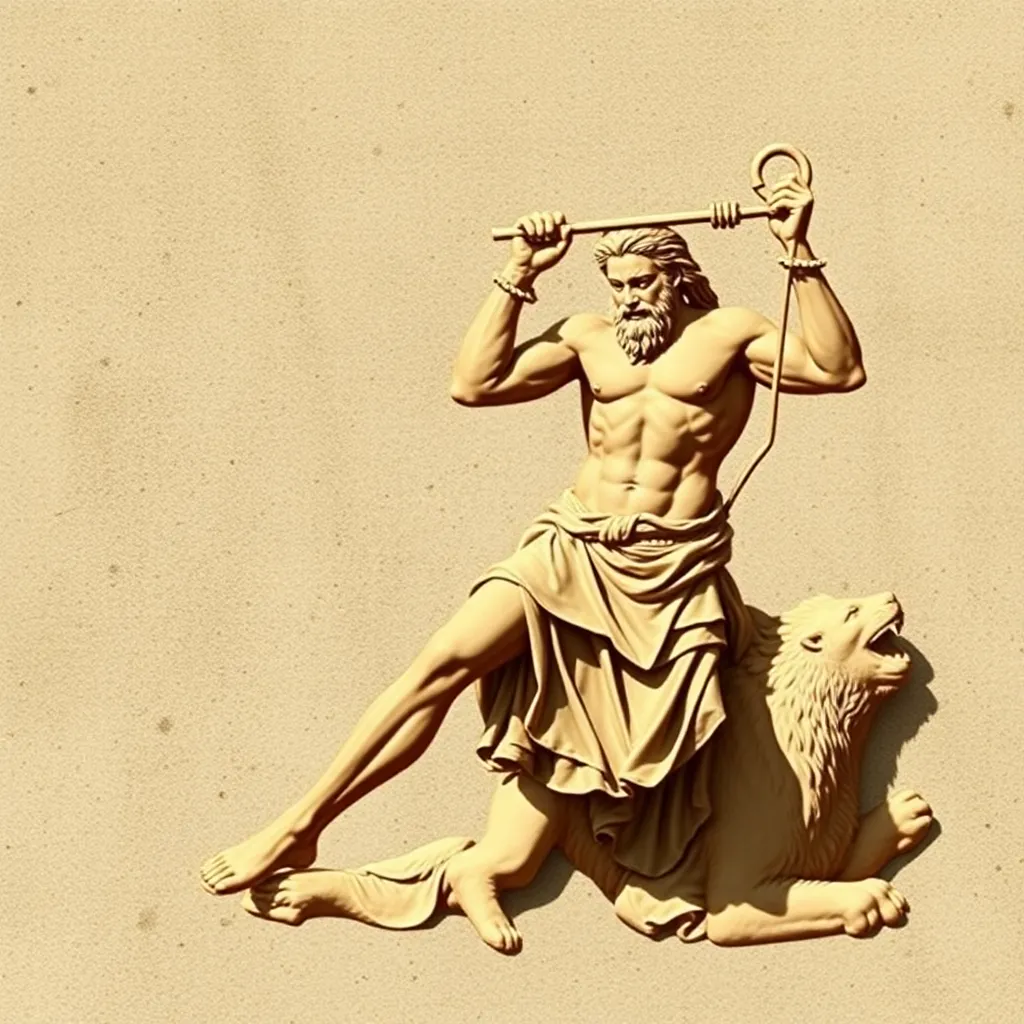The Evolution of Heracles in Ancient Literature and Art
I. Introduction
Heracles, known for his extraordinary strength and legendary adventures, stands as one of the most prominent figures in ancient Greek mythology. His tales of heroism, trials, and tribulations have resonated through centuries, influencing various facets of culture, art, and literature. Understanding Heracles is essential for comprehending the values and beliefs of ancient Greek society.
This article aims to explore the evolution of Heracles in ancient literature and art, tracing his origins, representations, and transformations across different historical periods. By examining various sources, we can gain insight into the significance of this mythical hero and his enduring legacy.
II. Origins of Heracles in Greek Mythology
Heracles, originally named Alcides, was born to Zeus and Alcmene, a mortal. His lineage is central to his identity as a hero, being the son of the king of the gods. The jealousy of Hera, Zeus’ wife, led to a life filled with challenges for Heracles from the very beginning.
Early myths depict Heracles facing numerous trials, often as a means of proving his strength and valor. These stories include:
- The Twelve Labors of Heracles, a series of nearly impossible tasks set by King Eurystheus.
- His battles against mythical creatures like the Nemean Lion and the Hydra.
- His role in the Argonauts’ expedition and the Trojan War.
Heracles was not only a figure of strength but also a symbol of the struggle against adversity, making him a significant character in Greek culture and religion.
III. Heracles in Early Greek Literature
In early Greek literature, Heracles emerges prominently in the epic poems attributed to Homer, particularly in “The Iliad” and “The Odyssey.” In these texts, he is referenced as a paragon of heroism and is often invoked as a standard against which other heroes are measured.
Hesiod’s works further explore the character of Heracles, providing insight into his trials and the moral lessons derived from them. For example, in “The Theogony,” Hesiod emphasizes the divine aspects of Heracles while addressing the themes of fate and suffering.
Through these early epic poems, Heracles’ character developed into a complex figure embodying both heroic ideals and human flaws, setting the stage for later interpretations in Greek tragedy.
IV. Transformation in Classical Tragedy
In classical tragedy, Heracles is portrayed in a more nuanced light, particularly in the works of playwrights like Euripides and Sophocles. In Euripides’ “Heracles,” the hero grapples with madness, a consequence of Hera’s vengeance, leading to tragic outcomes, including the loss of his family. This portrayal emphasizes the fragility of human nature, even in a figure of immense strength.
Similarly, Sophocles presents Heracles as a hero seeking redemption, navigating themes of suffering, identity, and the quest for forgiveness. These tragedies profoundly impacted Heracles’ legacy, shifting the perception of the hero from merely a strongman to an embodiment of the human condition.
V. The Depiction of Heracles in Ancient Art
Heracles has been a popular subject in ancient art, reflecting his significance in Greek culture. Various forms of artistic expression captured his image and stories, from monumental sculptures to intricate pottery.
Architectural representations, such as temples and statues, often depicted Heracles in heroic poses, emphasizing his strength and valor. Notable examples include:
- The Temple of Zeus at Olympia, which featured a statue of Heracles among other deities.
- The famous Farnese Hercules, a marble statue showcasing his muscular form and heroic demeanor.
Additionally, pottery and vase painting presented iconography of Heracles engaging in his labors, allowing everyday people to connect with his myths. Over time, artistic styles evolved, with the depiction of Heracles reflecting changing cultural values and aesthetics.
VI. Heracles in Hellenistic and Roman Literature
During the Hellenistic period, the portrayal of Heracles began to shift, influenced by changing societal values and interpretations of heroism. Writers like Apollonius of Rhodes and Callimachus offered new perspectives on Heracles, often emphasizing personal struggles and emotional depth.
Roman authors, including Virgil and Ovid, further adapted Heracles into their literary canon. Virgil’s “Aeneid” references Heracles as a model of virtue, while Ovid’s “Metamorphoses” includes transformative tales that highlight Heracles’ legendary status. The Romans embraced Heracles as a cultural icon, integrating him into their mythology and associating him with Roman virtues.
VII. Heracles in Later Interpretations and Legacy
The Renaissance marked a renewed interest in classical themes, leading to a neoclassical rediscovery of Heracles. Artists and writers sought to revive ancient ideals, portraying Heracles as a symbol of strength, virtue, and human resilience.
In modern literature and popular culture, Heracles continues to inspire adaptations, from comic books to films. He is often depicted as a superhero, embodying the archetype of the strong yet flawed hero. His stories resonate with contemporary themes of overcoming adversity and personal growth.
Today, Heracles remains a powerful symbol of strength and perseverance, representing the timeless human struggle against challenges and the pursuit of greatness.
VIII. Conclusion
The evolution of Heracles in literature and art illustrates the dynamic nature of mythology and its capacity to reflect societal values over time. From his origins in Greek mythology to his adaptations in Roman culture and modern interpretations, Heracles embodies the complexities of heroism.
Heracles’ enduring significance in contemporary society speaks to the universal themes of struggle, redemption, and the quest for identity. The interplay between myth, art, and cultural identity continues to shape our understanding of this legendary hero, ensuring that his legacy endures for generations to come.




